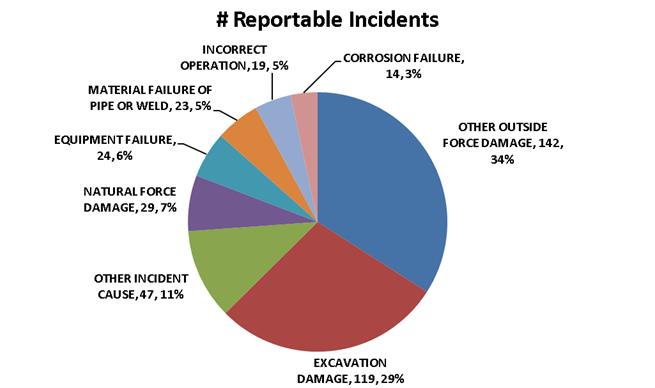November 2014, Vol. 241, No. 11
TechNotes
Risk Assessment Software Vital For Pipeline Safety

Opvantek’s decision support software (Optimain® DS) is used to assess risk and prioritize replacement in many of the nation’s largest and oldest gas distribution systems, accounting for over 25% of the total U.S. distribution mileage. In continuous development for over 20 years, Optimain® DS has algorithms for evaluating risk across diverse and complex piping systems and environments, comprising every piping technology in use since the early 1900s.
Gas utilities are well aware of safety issues related to infrastructure deterioration and have continued to increase investments to replace underground infrastructure for the past several decades. Nevertheless, as the recent USA Today article points out, it will take many more decades and billions of dollars to replace all of the “at risk” pipes in the system.
Most of that pipe is found in some of the oldest and most congested cities in the nation. As recently as 2013, there have been congressional efforts to force acceleration of pipe replacement. We hope that USA Today’s report builds awareness and support for what will be a huge cost and public inconvenience.
As the nation and the utility industry take on this challenge, we believe it is vitally important to put the risks into perspective. Recognizing that the nation cannot afford to replace all the aging pipes at the same time and that not every leak has the same risk. The best approach is to objectively assess which pipes have the highest current risk.
That assessment should be based on all available data regarding the history and condition of each pipe and where it is installed. This is exactly the approach suggested by the Distribution Integrity Management (DIM) regulations, as implemented by each operator’s written DIM plan. This is also the approach taken by Optimain® DS.
The USA Today report and many of the local articles focus on gas leaks caused by pipe deterioration. However, the interactive maps included in the report are based on “reportable incident” data as published by the federal Department of Transportation’s Pipeline and Hazardous Materials Safety Administration (DOT/PHMSA) since 2004. It is critical to recognize that only a small subset of reportable incidents is due to leaks caused by pipe deterioration. It is also important to recognize that a pipe that has higher risk relative to other pipes is not the same thing as an unsafe pipe.
Figure 1 provides a pie chart of all 417 nationwide reportable incidents that resulted from gas leaks (unintentional release of natural gas) since 2010. This shows that the two leading causes of more recently reportable incidents were excavation damage and other outside forces. Only 90 of 417 were from causes that might be related to aging infrastructure [1]. Aging infrastructure is not the cause of over 75% of incidents related to the unintentional release of natural gas. Furthermore, less than 1 in 5,000 of all leaks reported annually by the industry will lead to an incident like those displayed on USA Today’s interactive maps.
Excavation damage is the nation’s leading cause of reportable incidents that resulted from unintentional release of gas since Jan. 1, 2013. Opvantek offers the only commercially available, data-driven engine (Optimain xDR) that assesses (in real time) the risk of excavation damage from any one-call notification reported via the national 811 call system.
We, therefore, encourage the media to raise public awareness of this even more risky threat. We continue to encourage all stakeholders in the damage prevention industry, including federal and state legislatures, to adopt the best practices that have been identified by the Common Ground Alliance.
To be clear, Opvantek is dedicated to assessing and reducing risk within our nation’s gas piping system, regardless of cause. We are committed to helping our customers justify and prioritize spending to most efficiently improve the already excellent safety record of our natural gas transmission and distribution infrastructure.
[1] This assumes that every incident caused by corrosion; material, pipe, weld or equipment failure; and natural force damage was the result of aging infrastructure.





Comments